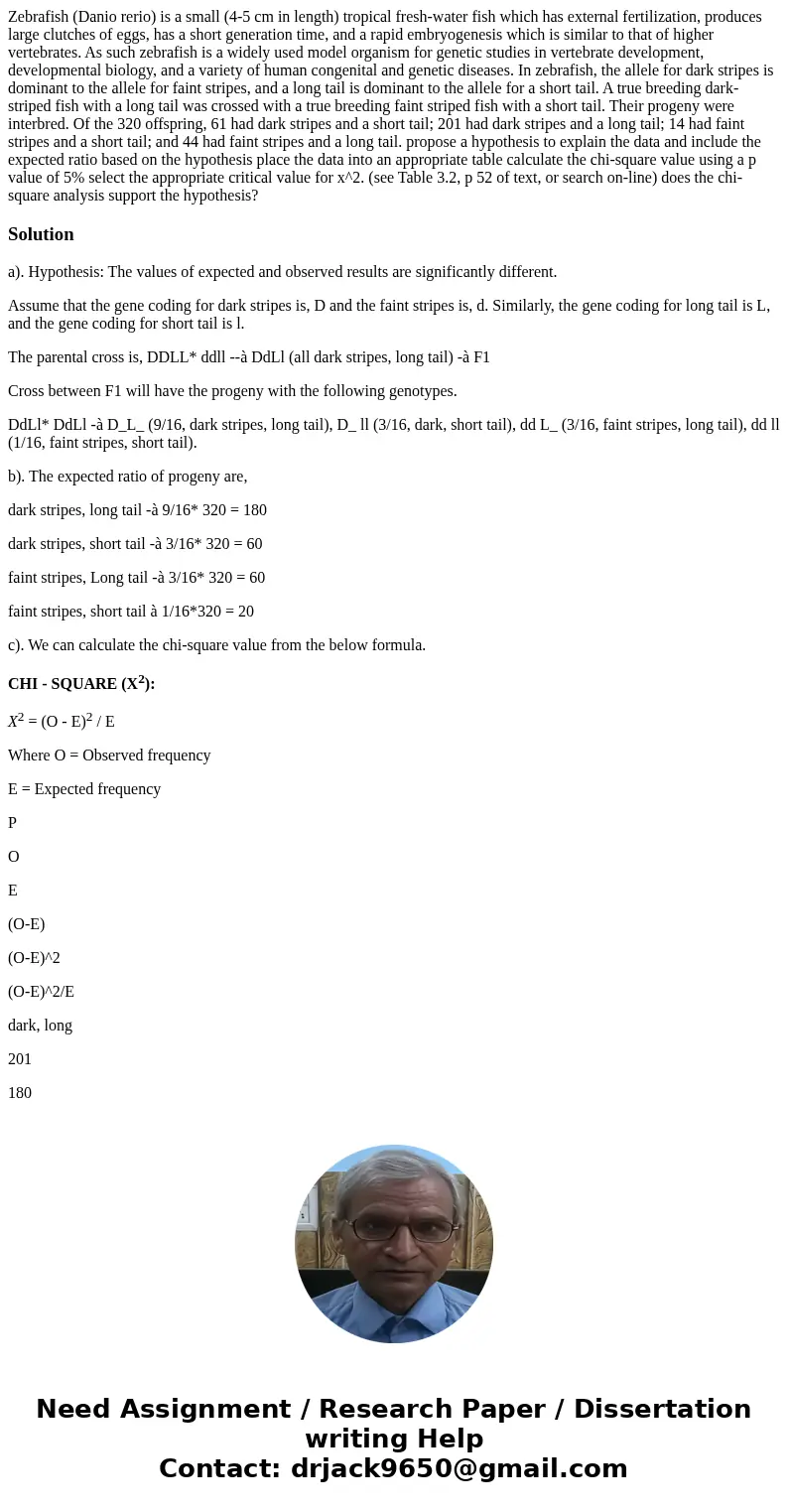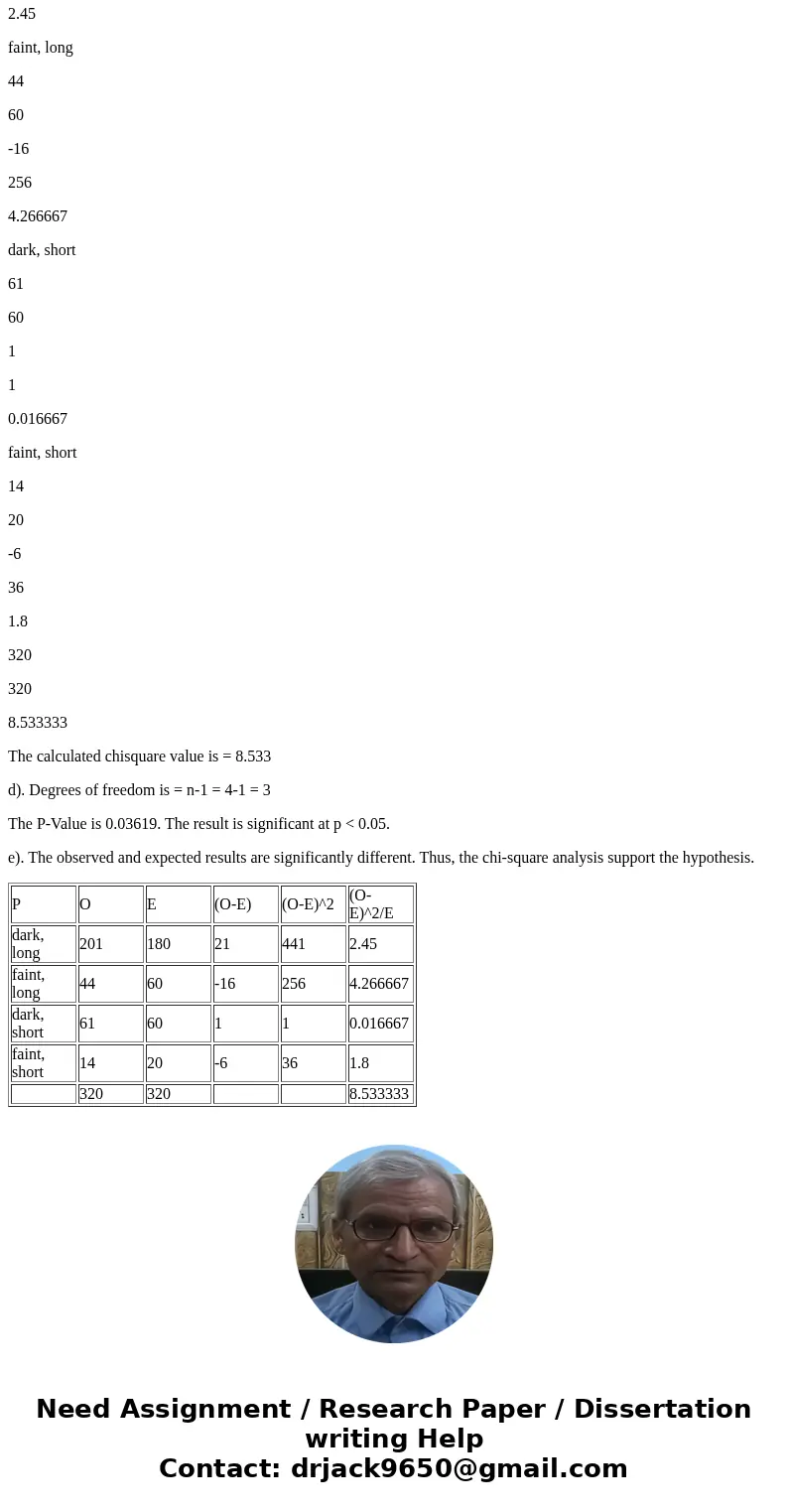Zebrafish Danio rerio is a small 45 cm in length tropical fr
Solution
a). Hypothesis: The values of expected and observed results are significantly different.
Assume that the gene coding for dark stripes is, D and the faint stripes is, d. Similarly, the gene coding for long tail is L, and the gene coding for short tail is l.
The parental cross is, DDLL* ddll --à DdLl (all dark stripes, long tail) -à F1
Cross between F1 will have the progeny with the following genotypes.
DdLl* DdLl -à D_L_ (9/16, dark stripes, long tail), D_ ll (3/16, dark, short tail), dd L_ (3/16, faint stripes, long tail), dd ll (1/16, faint stripes, short tail).
b). The expected ratio of progeny are,
dark stripes, long tail -à 9/16* 320 = 180
dark stripes, short tail -à 3/16* 320 = 60
faint stripes, Long tail -à 3/16* 320 = 60
faint stripes, short tail à 1/16*320 = 20
c). We can calculate the chi-square value from the below formula.
CHI - SQUARE (X2):
X2 = (O - E)2 / E
Where O = Observed frequency
E = Expected frequency
P
O
E
(O-E)
(O-E)^2
(O-E)^2/E
dark, long
201
180
21
441
2.45
faint, long
44
60
-16
256
4.266667
dark, short
61
60
1
1
0.016667
faint, short
14
20
-6
36
1.8
320
320
8.533333
The calculated chisquare value is = 8.533
d). Degrees of freedom is = n-1 = 4-1 = 3
The P-Value is 0.03619. The result is significant at p < 0.05.
e). The observed and expected results are significantly different. Thus, the chi-square analysis support the hypothesis.
| P | O | E | (O-E) | (O-E)^2 | (O-E)^2/E |
| dark, long | 201 | 180 | 21 | 441 | 2.45 |
| faint, long | 44 | 60 | -16 | 256 | 4.266667 |
| dark, short | 61 | 60 | 1 | 1 | 0.016667 |
| faint, short | 14 | 20 | -6 | 36 | 1.8 |
| 320 | 320 | 8.533333 |



 Homework Sourse
Homework Sourse